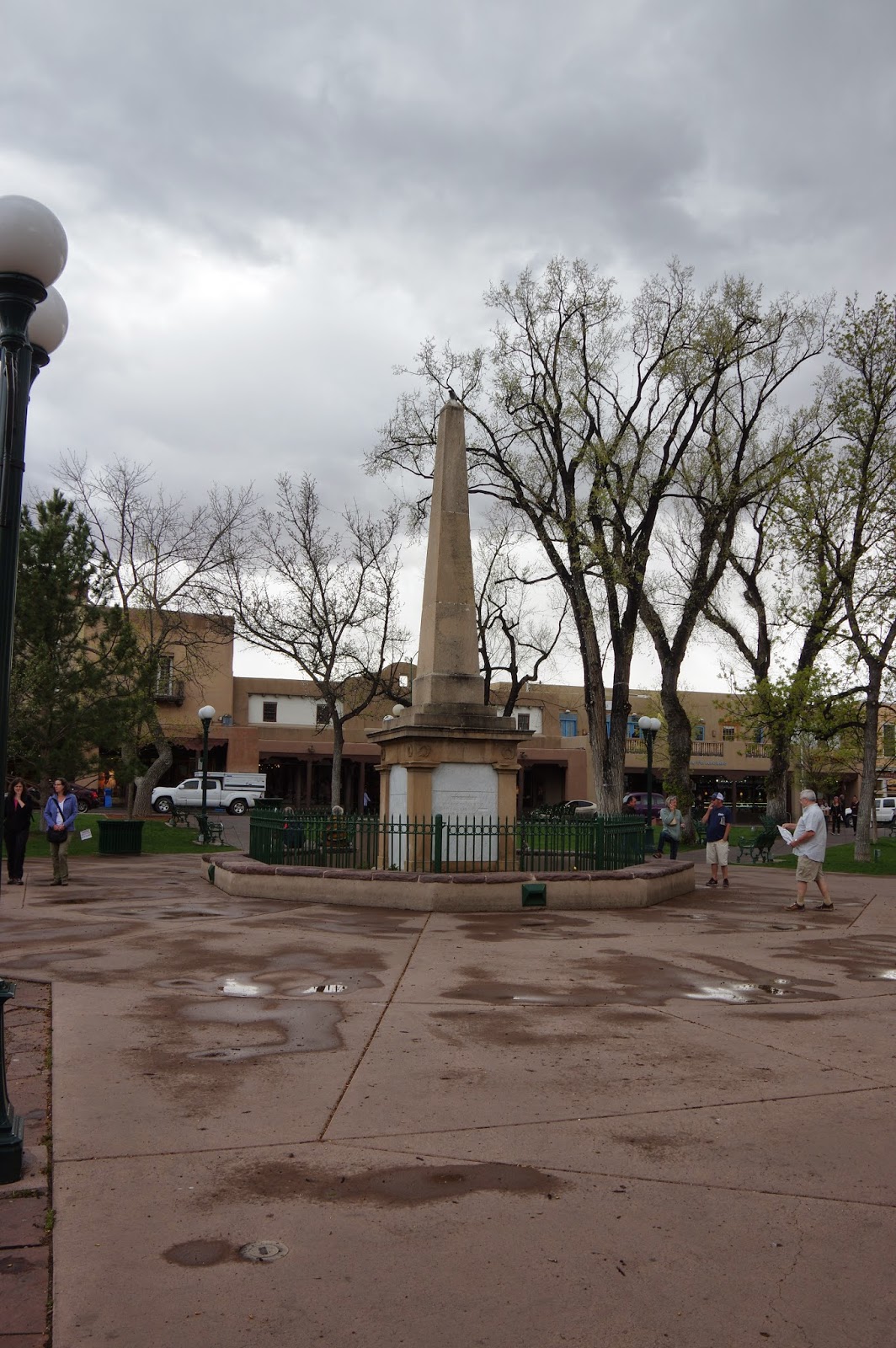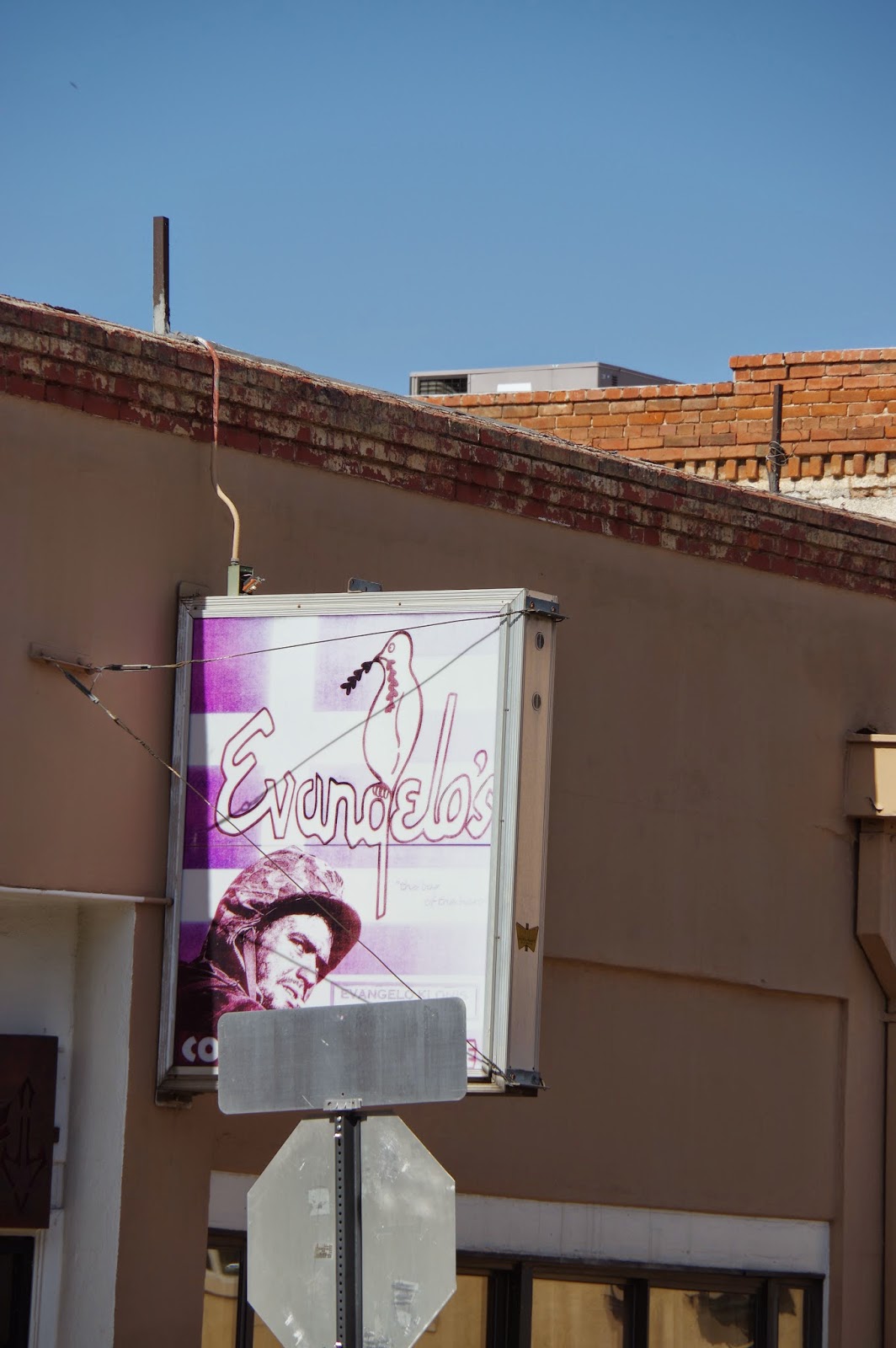This post Civil War memorial is located in central downtown Santa Fe New Mexico, in a plaza that dates back to 1609. The obelisk commemorates the American Indian Wars and the Civil War as of the date of its placement, 1868.
This is, of course, of interest not only in what it commemorates, but what it does not. In 1868, the Indian Wars were still ongoing, and Santa Fe featured prominently in the Pueblo Revolt, and event which of course is wholly omitted.
This inscription reads: "To the heroes who have fallen in various battles with [ ] Indians in the Territory of New Mexico.". The word "savage" was removed from the memorial.
The inscription reads "To the heroes of the Federal Army who fell at the Battle of Valverde fought with the rebels February 21, 1862"
The inscription reads "To the heroes of the Federal Army who fell at the battles of Canon Del Apache and Pigeons Rancho (La Glorieta) fought with the rebels March 28, 1862 and to those who fell at the Battle fought with the rebels at Perilta April 15, 1862




















































